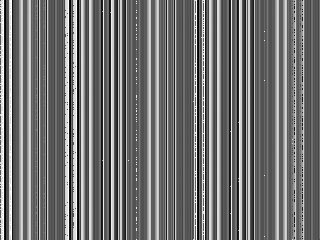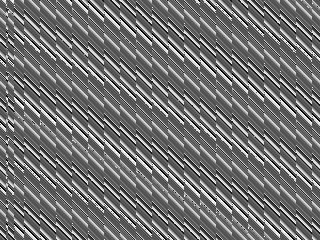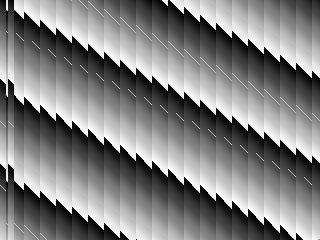I am taking a new prototype into operation. The OPT9221 delivers datat directly into an FPGA which is supposed to do something with the depth data but currently is configured to just forward the meta pixels (32Bit). I am getting depth images in 4-Byte-mode (DE0x25 OP_DATA_ARRANGE_MODE = 0). Since I am having issues with the depth data I first have to rule out the FPGA part is not doing any unintended byte manipulations. Thus, I have activated ROW-ramp test-pattern (DE0x31 MAC_TEST_ENABLE = 1, RAMP_PAT = 1) and optained this test image for amplitude data:
Next I activate the column test pattern Thus, I have activated ROW-ramp test-pattern (DE0x31 MAC_TEST_ENABLE = 1, RAMP_PAT = 2) and optain this image for amplitude data:
Both images are obviously ill formed.
Now I would need the reference images how the data should look like in these modes (that is, what test patterns are for). But these references cannot be found in the SBAS703A –JUNE 2015–REVISED JUNE 2015 OPT9221 chip documentation. Could you plese provide the expected test data images. This would help a lot.
I assume the continous pixel data is comming out the chip in a little-endian format: AC0-Byte0, AC0-Byte1, FP0-Byte2, FP0-Byte3, AC1-Byte0, AC1-Byte1, FP1-Byte2, FP1-Byte3 ...
Hopefully this assumption is right?
Thanks in advance, Frank.






